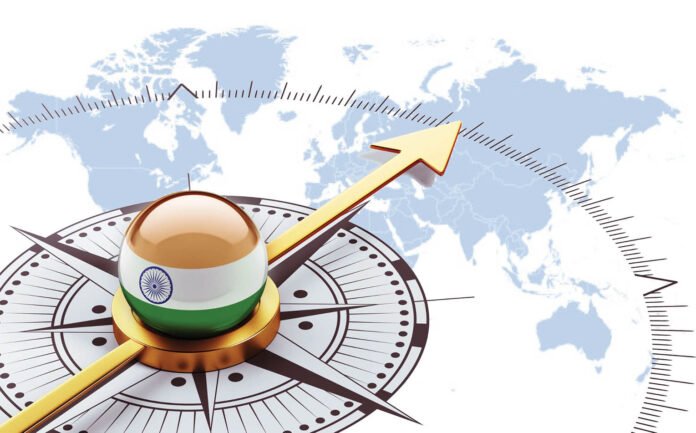In the backdrop of a perennially challenging geopolitical environment, India’s engagement with competing camps has earned it laurels, both at home and abroad. New Delhi, under the stewardship of an assertive foreign minister, has tried to manage its boundary dispute with China without escalation, strengthened defence and technology cooperation with the United States, diversified its options with minilaterals in the Indo-Pacific, kept relations with Russia ongoing, and sought the leadership mantle of the Global South.
In charting an independent course, it has managed to benefit from the Russian supply of cheap oil and acquisition of the S-400 missile defence system, while avoiding punishment from the Western bloc. The ties with Washington have gone from strength to strength as well, with defence acquisitions, the Initiative on Critical and Emerging Technology (iCET), and minilateral cooperation on regional order building. During its G-20 presidency, India also positioned itself as a leading power, standing up for the Global South and acting as a humanitarian responder of first resort. In contrast, relations with China have been in a downward spiral after the Galwan Valley clash in 2020. In retaliation, India has ramped up its force presence along the disputed border, banned a host of Chinese apps, and cooperated with like-minded regional maritime partners to send a signal to China. But, India’s trade dependency on China shows no sign of abating in near term.
Beneath its image as the bridge builder and the vishwamitra, there are also some strains visible in India’s great power relations. To be clear, New Delhi’s mandarins have indeed pursued adroitly the Indian national interest. It is just that pulling off the geopolitical hedging comes with its own set of challenges. The tolerance threshold for other actors’ detrimental actions has narrowed down and India’s manoeuvring space seems to have shrunken.
The Indian strategic community is aware of the possible limitations of underlying power imbalance that ultimately dictates the geopolitical equilibrium. Rather, as the external affairs minister S Jaishankar notes, New Delhi is reliant on its own rising profile as well as deft diplomacy to exploit an order in flux. While such a gambit may pay off on occasions, strategic autonomy might also have its pitfalls and limitations.
Dealing with the United States: Strategic Convergence amidst Ideological Trust Deficit
India’s relations with the US are arguably the most successful case of diplomatic management of great power ties. Driven by the shared need to counterbalance China, the US has stepped up its cooperation with India over defence acquisition, emerging technology, diplomatic support, and regional public goods provision. But occasional hiccups sometime lead to a drawdown in expectations.
New Delhi intensely dislikes the US pressure on India over its liberal democratic credentials and the issue of human rights. Both nations have also taken a different stance over the war in Ukraine as well. India’s desire for a multipolar power configuration does not exactly sit with the US policymakers’ wish for global power preponderance. Yet, convergences led by strategic and security partnership has grown.
In some circles of New Delhi, there is an ideological distaste for the US-based NGO complex which is seen as an instrument of regime change. Indian right-wingers bristle at the US progressive organisations’ state-linked or independent- criticism of the regime in New Delhi as interference in its internal manner.
India’s adept handling of its relations with the United States highlights a strategic convergence aimed at countering China, despite occasional ideological rifts. The US-India partnership has strengthened through defence cooperation and technology initiatives, even as both nations diverge on issues like human rights and the Ukraine conflict
Despite these stumbling blocks, political leadership and diplomats have shown a remarkable degree of acumen in keeping the partnership steady and ongoing. However, in the likely case of a Sino-US thaw, India might get a short shrift.
Meeting the China Challenge: Balancing Territorial Disputes and Economic Imperatives
Since the 2020 Galwan clash, it has become difficult for India to manage its ties with China on an even kneel, despite the considerable level of economic interdependence and a potential convergence over reforming the post-war international order. From the perspective of New Delhi and its Indo-Pacific partners, a rising China comes across as a menacing actor instigating territorial disputes, weaponising economic ties, and peddling influence operations. In response, New Delhi has ramped up its defence posture across the Line of Actual Control (LAC), lent diplomatic support to regional partners facing Chinese harassment, built up strategic ties by way of military exercises & training, defence deals, port calls, intelligence sharing, and positioned itself as a voice of the Global South.
At the same time, India’s developmental needs warrant continued reliance on China’s manufacturing heft despite a live border situation. Even the efforts at derisking by attracting foreign capital and firms to set shops in India involve an increase in the import of intermediate goods from China in the short-run at least. Paradoxically, the Indian pathway towards derisking will have to go through the involvement of the Chinese joint ventures, technology transfer, and human capital. Even so, a successful bid at derisking and diversification won’t result in a complete decoupling from the Chinese economy. However, given the relatively low volume of Indian exports to China, Beijing lacks significant coercive leverage in terms of economic statecraft, unlike in the case of, say, Australia. Motivated by geopolitical considerations where the costs remain bearable for China, it might nevertheless impose export control restrictions, thereby depriving Indian consumers of access to affordable Chinese goods.
Based on the recent trends of growing commercial engagement with China and some limited progress in building buffer zones in the disputed border area, some analysts see a new normal in the offing. Yet it would be a mistake to read too much into New Delhi’s pragmatic bid of lying low and buying time. Minister Jaishankar has explicitly admitted the power differential between the two nations which has dictated a cautious Indian response to Chinese provocations. India’s pressing youth population bulge also warrants an urgent attention to economic development which, in turn, is reliant on commercial ties with China.
At the same time, China evokes a deep sense of distrust and worry among the Indian strategic elites as well as the public. Hence, India has to walk a tightrope between standing firm but not inciting preventable escalation while it grows economically and indigenises its defence-industrial base.
Despite ramping up its defence posture and building alliances in the Indo-Pacific, India’s dependence on Chinese trade underscores the delicate balance it must maintain. The strategic pursuit of economic development while safeguarding national security illustrates India’s complex approach to its northern neighbour
Managing Russia: The Logic of Path Dependency and Autonomy
Compared to the Cold War years, Russia’s role in shaping the world order has changed considerably. For New Delhi, a mix of nostalgia, sense of reliability, obsession with keeping options open, calculations about handling Beijing, and path dependency dictate its handling of this old relationship. For Russia under Putin, the West comes across as an adversary which it hopes to stave off with the help of China. But too much dependence on China comes with its own vulnerability. In this scheme, Russia seeks to leverage ties with New Delhi to signal to both the West and China the presence of multiple options for itself. On the other hand, despite recent efforts at diversification and indigenisation, India is considerably dependent on Russia for defence acquisitions. It has pragmatically relied on access to cheap Russian oil in the aftermath of the war in Ukraine. The Moscow card also serves as evidence of Indian mandarins’ adherence to strategic autonomy at a time when the inexorable geopolitical logic dictates closeness with the West.
Going forward, Russia would continue to matter in the Indian geopolitical calculus, but with altered metrics. While Russia’s willingness to share advanced weapons technology could potentially be matched and surpassed by the West as evident in the General Electric jet engine deal case, India’s defence dependency on Russia gives the latter leverage and might potentially hamper an effective Indian response against Chinese military incursion. The shared desire for a multipolar order does not amount to much as the great power competition effectively involves the US and China as two main poles, with Russia as China’s junior partner.
The Indian strategy of maintaining engagement with Russia in hopes of reducing its over-reliance on China may not unfold as intended. To put it simply, Russian dependency on China exceeds its dependency on India. China does not need Russia as much as Russia needs China in countering the West. When the push comes to shove, India might have to confront the possibility of unimagined consequences in this domain. Further, following Prime Minister Narendra Modi’s visit to Moscow, the criticism from the West and the subsequent Ukraine visit announcement lay bare the tough juggling act that passes for India’s professed adherence to strategic autonomy. Far from demonstrating a rising power’s confident, bridge builder role, the recent events underscore the constraints that New Delhi has to operate under in an increasingly fraught geopolitical environment. These constraints are largely based on externalities which Delhi has little control of.
Takeaways
To be sure, a careful assessment of India’s great power ties should not overlook the agility with which Indian diplomats have handled a set of tough situations. The ties with the US serve the useful function of counterbalancing China; border conflict with China has not taken a turn for worse while commercial interactions continue apace; and engaging Russia steadily without antagonising the West demonstrates skilful diplomacy at work. However, the relative power differential and choices made by other great powers put a real limit on India’s exercise of options in pursuit of its national interest.
-The writers are a Fellow in the Americas Programme at the Observer Research Foundation (ORF), New Delhi, and a Doctoral Research Scholar at the Centre for International Politics, Organisation, and Disarmament (CIPOD) within the School of International Studies, Jawaharlal Nehru University, New Delhi, respectively.






